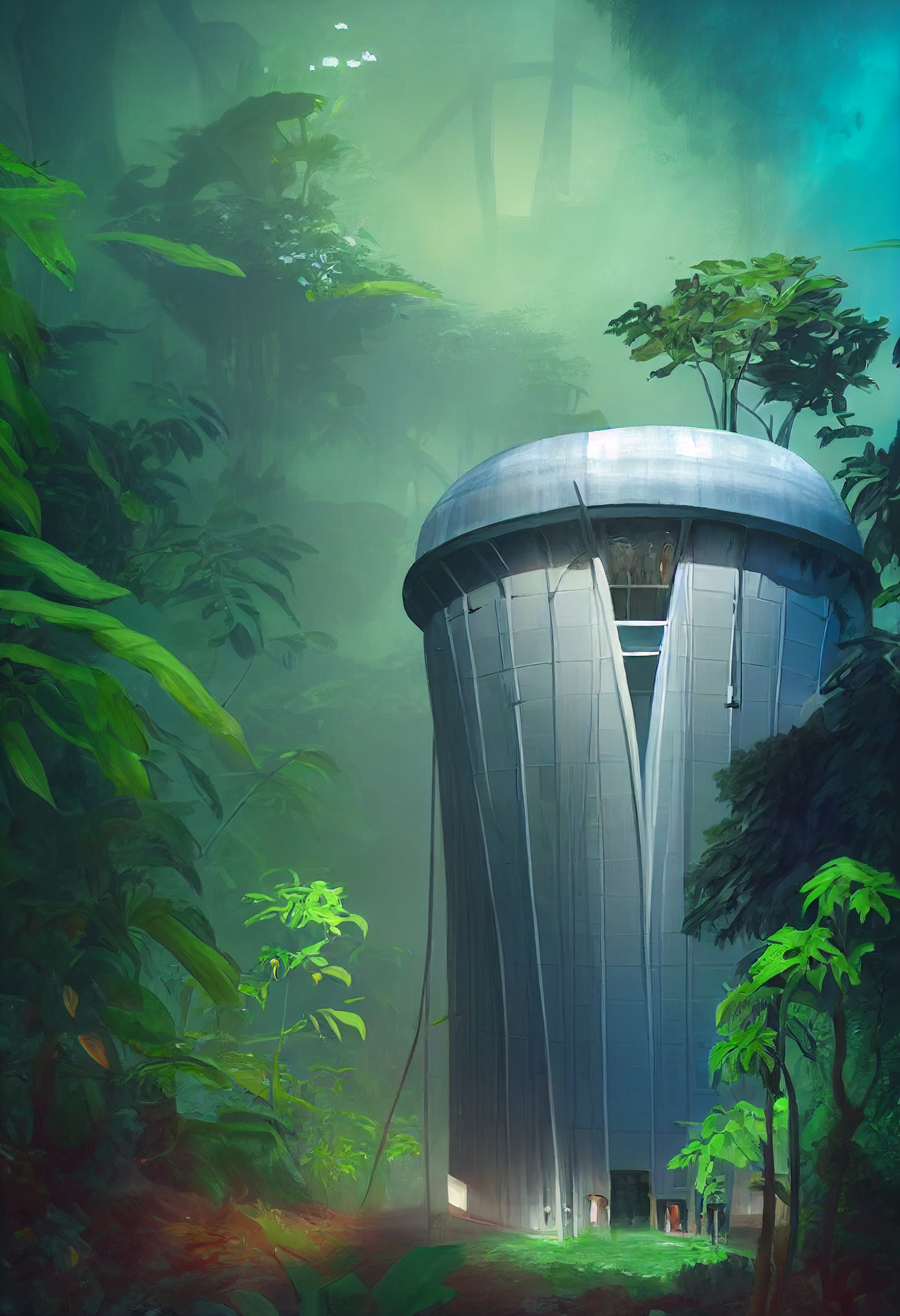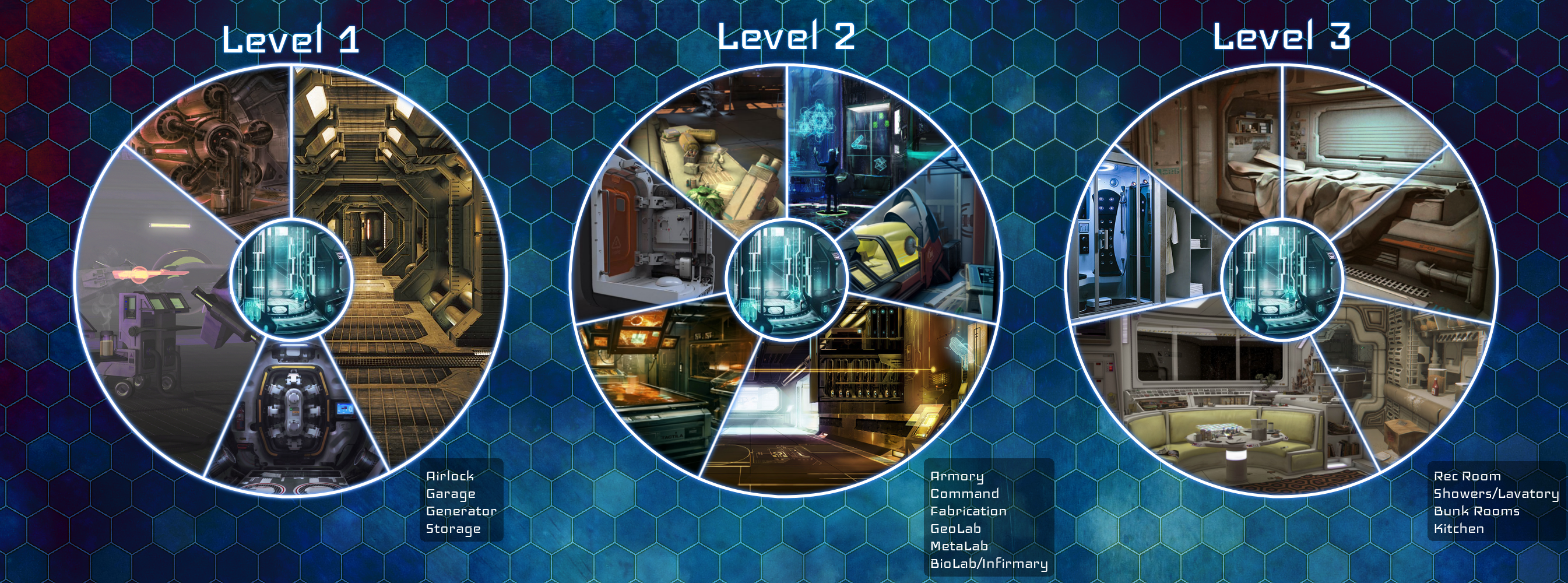"People, we are teetering on the cliff of an age of exploration the likes no one could have dreamed. Thousands of planets, ripe to be settled. Homes and food for the countless people huddled in cramped apartment blocks. Resources and Real Estate for all The Banners looking to expand into the stars.
Manifest Destiny. Enticing Imperialism. A Race to the Stars!
So what is this cliff? What is this barrier that stands between all of us, and the possibility of endless opportunity? Practicality. Cost-effectiveness. That is what our line of orbit deploy-able Habitats provides. We provide you the parachute to jump off that cliff and stake the rich soil below for your own."
Overview
After the end of the The Melancholic Lacuna, thousands of habitable planets became accessible in the blink of an eye. Companies saw the need to create quick and easy ways for Banners to reclaim and resettle on these planets. The first company to deliver on this idea was Columbus Colonization, LLC. with their introduction of the Habitat line of dwellings.
Habitats are designed to facilitate Stage II Colonization efforts. It has since been licensed and copied by multiple corporations across the Banners for use in Stage II efforts.
From the first structures more akin to metal cans with beds and a kitchen; they have advanced to cutting edge metal cans with all the luxuries of a hub-world station.
Habitats can house anywhere between four to twenty people, and can be dropped with crew inside from a delivery ship on a orbital pass. They are deployed to create a staging ground for establishing the infrastructure for larger scale colonization.
Pictured Right: Concept art revealed with the first Habitat line. Note the removable modular structures at the base of the main facility.
A habitat is constructed of an atmospheric-entry capable titanium alloy, shaped into a cylindrical structure with a reinforced central 'spine' and multiple rooms. It can be one to five stories tall depending on the amount of rooms purchased for the mission.
While falling to earth in one piece, habitats are comprised of segmented wedges and a center support. Each stacked wedge can be separated from the main structure. This allows the colonists to establish a more spread out colony. If space is a concern, it can remain in a single stack configuration.
Center Support
The primary spine of the habitat is a reinforced utility shaft that serves several purposes besides keeping the attached wedges in place during atmospheric entry.
- A water well and drill kit comes standard, allowing quick access to ground water tables.
- A utility crane can utilized to move individual wedges around the colony site. If the structure is kept together, then the center crane can function as access to upper floors through a freight elevator.
- Other mission critical components are stored in the center support. This includes but is not limited to; Industrial scale power storage and deployable solar generation array.
Wedges
A wedge is a habitat subsection; a room designed to provide a specific function. Each level of a central support can carry five docking slots for wedges. These wedges can be merged together to suit larger capacity rooms such as barracks. Each wedge contains its own storage compartment, wiring, water piping, and individual supports shall it need to be set up separate of the central support.
Many companies offer already designed rooms called 'templates' which can make constructing and stocking a habitat as easy as ordering food through the net. Custom templates can also be created by the customer to suit every adventure.
Stage two colonization is arguably the most crucial stage of the three stage process. Stage one, you are scouting, exploring, scavenging. You are not looking to make a home, but report back what you find and get paid for it. You don't stay, you don't really have a stake in it besides the paycheck.
Stage two colonists, and the Habitat they ride in on, are like the first covered wagons heading west in the pre-advent days. They are the ones heading down to make the land livable. They are the ones who raise the flag for their banner. Their stake is to make a home for themselves and for others. If Stage two doesn't succeed, then you know the stage three colonists would not make it. You wasted so much time, so many resources, and the lives of your colonists.
That's why we made the Habitats, these people need the best chance of survival possible. They are the seed of sophont life on a planet, and our habitats make sure these seeds are as protected as possible.
- Habitat is purchased from CC by investor with planet to colonize included.
- CC compiles Stage one scouting information for Investor. Investor uses Information to purchase wedge templates and find drop zone.
- CC organizes and hires Habitat Crew with investors recommendations
- A scouting party is sent planet side before Habitat, finding a suitable exact landing site. If this party parishes or has to be evacuated, the last two steps are recompiled.
- With scouting party success, a Habitat drop site is specified. Crew on board Habitat approves coordinates and Habitat is dropped via orbital delivery vessel.
- Habitat, along with remaining crew, lands on planet using Impact Gel.
- Colonists explore and begin cultivating the land to prepare for Stage Three ship arrivals. At which point the mission is complete.




Comments